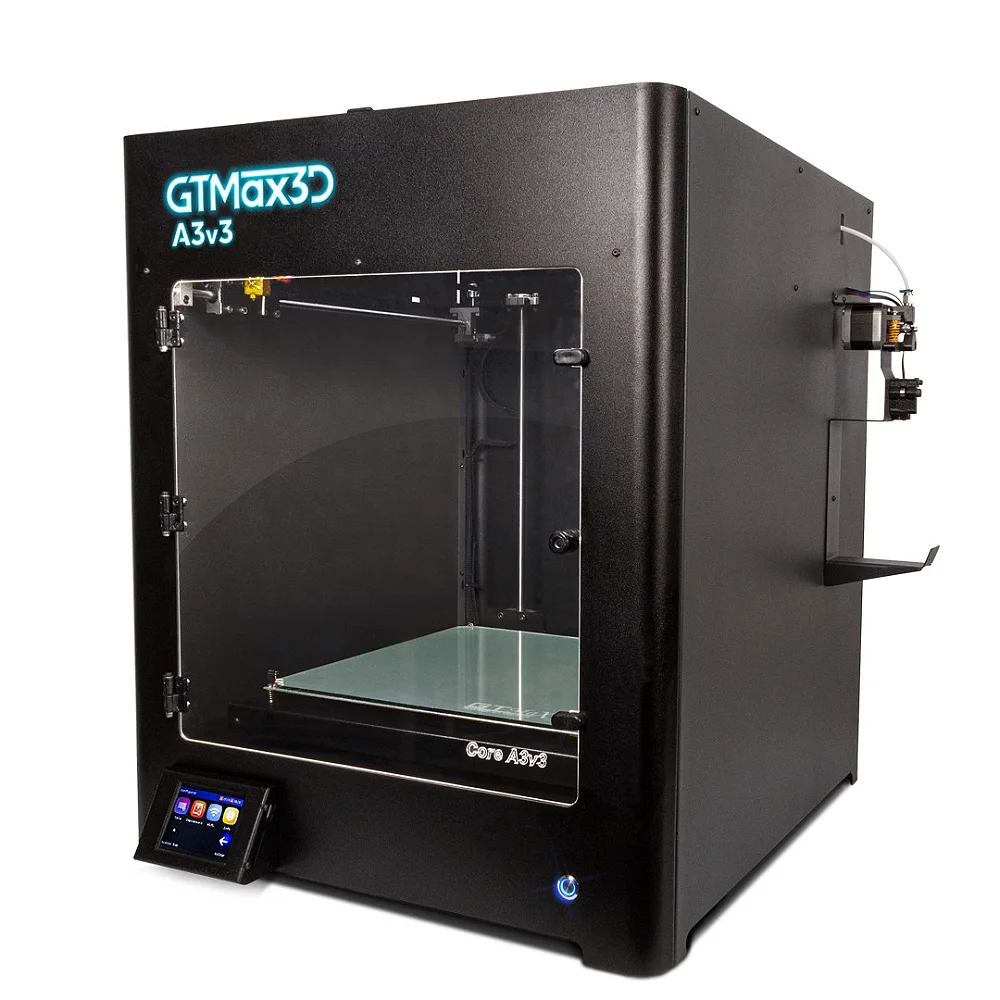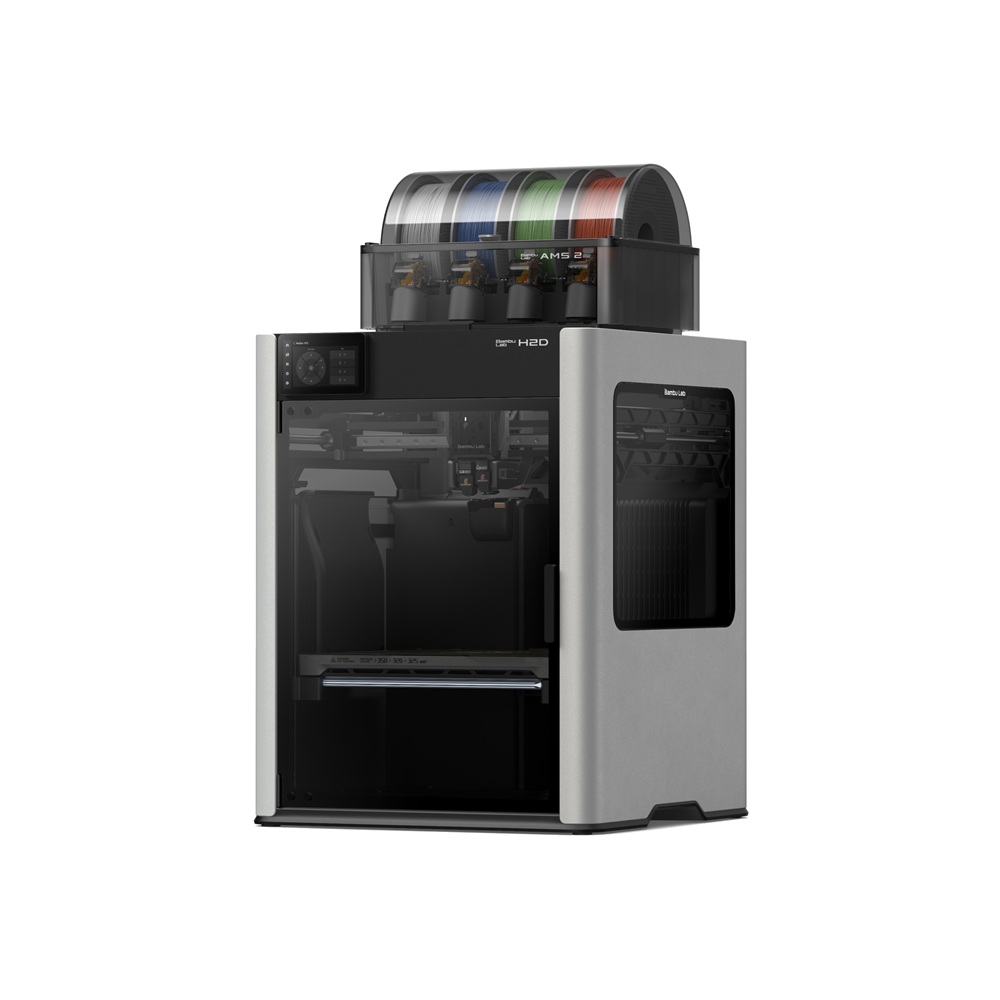Compare A3V3 vs H2D
Comparison between the best 3D printers
Choose the best 3D printer at the best price. The cheapest 3D printers are here.
Buy a 3D printer here with 3D Fila.
 |
 |
|
| Model | A3V3 |
H2D |
| Printing Material | Filament | Filament |
| Buy Filament for GTMax A3V3 | Buy Filament forBambu Lab H2D | |
| Estimated price | $1210,00 | $1899,00 |
| Manufacturer | GTMax | Bambu Lab |
| Release Year | 2022 | 2025 |
| Print Volume [mm] | 320x320x340 | 350x320x325 |
| Printer Size [mm] | 640x580x630 | 492x514x626 |
| Weight [kg] | 42,3 | |
| Power Loss Recovery | YES | YES |
| Enclosed printer | YES | YES |
| Bed Leveling | Automatic | Automatic |
| Filament End Sensor | YES | YES |
| Bed type | Heated | Heated |
| Power supply system | Bowden | Direct Drive |
| Standard nozzle | 0,4 | 0,4 |
| Maximum Nozzle Temperature [°C] | 295 | 350 |
| Maximum Bed Temperature [°C] | 120 | |
| Maximum printing speed [mm/s] | 180 | 600 |
| Filament holder | YES | YES |
| Camera for supervision | NO | NO |
| Recommended filaments | PLA, PETG | PLA, PETG, ABS, ASA, TPU, PVA, Nylon (PA) |
| Recommended slicers | Cura, Simplify, Slic3r, IdeaMaker e outros | Bambu Studio |
| Maximum Resolution [mm] | 0,05 | 0,01 |
| Processor | ||
| Display | Display touchscreen 3,2'' | Touchscreen 5'' |
| Power Supply | ||
| Connectivity | SD / USB / Wi-Fi | Wifi, Bambu bus, Cartão SD |
| Operating systems | Windows, Mac, Linux | Windows, Mac, Linux |
| Date of registration in the system | 2022-11-12 | 2025-03-31 |
| Release date | 2022 | 2025 |
| Extra features | The PROCORE A3v3 is an advanced 3D printer with a robust structure and Wi-Fi connectivity. It stands out for its aluminum extruder with Dual Gear system for precision and traction, and a movement system with machined parts. It includes a 3.2-inch LCD Touchscreen Display, Wi-Fi remote control and a Core XY movement system for greater speed and precision. It offers an Allmetal Volcano hotend that reaches up to 295°C, is compatible with various filaments and has an energy saving system, reducing consumption by up to 75%. | Bambu Labs H2D combines high-speed 3D printing with a chamber heated up to 65 °C, dual extrusion with automatic nozzle switching, an AMS for filament drying and exchange, and AI sensors that detect failures. It offers optional laser and digital cutting capabilities, features intelligent calibration through computer vision, vibration control, enhanced fire safety, and real-time camera monitoring. |
| Support for multiple colors and materials (AMS and CFS) | NO | YES |
Notes * |
||
| Cost-benefit | 6 / 10 | 7 / 10 |
| Hardware | 3.5 / 10 | 8 / 10 |
| Tela | . | . |
| Print volume | 4 / 10 | 4 / 10 |
| Performance | 1 / 10 | 5 / 10 |
Conclusion |
| In concluding the comparison between the GTMax A3V3 and the Bambu Lab H2D 3D printers, several key factors stand out. Firstly, the A3V3 presents itself as a more budget-friendly option, appealing particularly to those who are conscious of their expenditure. It is designed with essential features such as automatic bed leveling, a sturdy construction, and good compatibility with various filaments including PLA and PETG. However, its maximum print speed and temperature capabilities are notably lower compared to its counterpart, making it less suitable for more demanding and complex printing tasks. Conversely, the Bambu Lab H2D, while significantly higher in price, excels in advanced features and performance. Its ability to handle a wider range of materials, including ABS, TPU, and nylon, offers greater versatility in printing applications. The H2D's impressive maximum printing speed, higher maximum nozzle temperature, and dual extrusion capabilities further enhance its efficiency and quality of output. Moreover, the incorporation of AI sensors and a more advanced user interface demonstrates a commitment to innovative technology and convenience. Ultimately, the choice between these two models depends largely on individual priorities. If cost-effectiveness and basic functionality are key, the A3V3 makes a solid case. However, for users seeking high performance, material versatility, and cutting-edge technology, the H2D stands out as the superior option. The cost-benefit assessments reflect this disparity, indicating that while the A3V3 might appeal to hobbyists and beginners, the H2D is tailored for professionals and enthusiasts looking for advanced capabilities in their 3D printing ventures. |

